
ST EDMUND THE KING, NORTHWOOD HILLS ARCHIVE SEP 2008-AUG 2009
The articles below are taken from my monthly columns in St Edmund's Church parish magazine ("The King"), which includes full details of my organ voluntaries for that month.
FROM THE CONSOLE - AUGUST 2009

This year is the 200th anniversary of Joseph Haydn’s death. In 1791, after thirty years working for Prince Eszterhazy in Eisenstadt, the sixty year old Haydn accepted a lucrative offer to come to London where he wrote his final twelve symphonies. These visits were a great success and enabled Haydn to become financially secure. He returned to Vienna in 1795 and in the last fourteen years of his life wrote much of his religious music including the oratorio “The Creation”. His trumpet concerto also dates from this period as does his song “Gott erhalte Franz den Kaiser”, written in 1797 for Emperor Francis II and, since1922, used as the German national anthem. It is also sung to John Newton’s words “Glorious Things of Thee are Spoken”.
Last month Bernard gave an account of a day trip into London. During the first week of the holidays I undertook a similar journey but by bike! After the first four miles on busy and undulating roads through Sudbury and Alperton I joined the Grand Union Canal. The next six miles took me along the towpath which had the double advantage of being both flat and traffic-free. It was wonderfully peaceful with many different types of water fowl including several families of swans and cygnets. The route took me over the North Circular aqueduct at Park Royal and there was a wonderful smell of biscuits as I cycled past the McVities factory at Harlesden. At Willesden I passed the car supermarket where we bought our last two cars and the North Pole train depot which was until two years ago home to the Eurostar. The route continued under the A40 Westway until the cycle path finally ended at Little Venice and I had to rejoin the traffic on the Edgware Road for the final three miles into the West End. After a picnic and a browse in several music shops I turned for home. This was much harder as I was now cycling into the wind. This necessitated a pit stop at Sainsbury’s in Ladbroke Grove conveniently situated next to the canal before completing my weary journey!
The Grand Union Canal is one of London’s great secrets. It stretches for over 130 miles from London to Birmingham and is part of a network which runs as far north as Lancashire and Yorkshire and West into Wales. I’m amazed that more people don’t use it more and I suspect a large number do not even know it exists!
August 23rd
Prelude – Trumpet Concerto (2nd Move.) – J.Haydn
Postlude – The Heavens are Telling ("The Creation") – J.Haydn
August 30th
Prelude – Wonderful World - Thiele, Weiss & Douglas
Postlude – Sortie in E Flat - L.Lefebure-Wely
FROM THE CONSOLE - JULY 2009
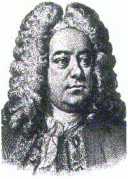
Exactly two hundred and fifty years ago this year – on April 14th 1759 - following a performance of his “Messiah”, George Frederick Handel died. He was given a full state funeral and was buried in Westminster Abbey. Born in the German town of Halle in 1685, his father discouraged his musical studies, insisting that he become a lawyer. However his father died when George was twelve and after briefly studying law abandoned this in favour of music. In 1706 Handel travelled to Italy where he developed his operatic style. In 1710 he became Kapellmeister to the Elector of Hanover who would soon be crowned George I. Handel moved to London the following year where he spend the rest of his life, becoming a naturalized citizen in 1727. He established Italian opera in London which flourished in the capital for the next thirty years. In his early years, Handel lived at Cannons, a grand palace on the site of the present North London Collegiate School near Stanmore. This was the residence of the Duke of Chandos and during his three years as Resident Composer Handel wrote the eleven Chandos Anthems and the opera “Acis and Galatea”. The only part of the estate still standing is the church of St Lawrence which is well worth a visit. In 1723, Handel moved into a house in Brook Street (just off New Bond Street) which was to be his home until his death. He had to rent because at the time foreigners were not allowed to own property. It has now been turned into a very interesting museum dedicated to the composer. Incidentally, Jimmy Hendrix lived next door to this house in the late sixties and this property now also forms part of the Handel House Museum.
July 6th
Prelude – Largo – G.F.Handel
Postlude – Overture (“Messiah”) – G.F.Handel
July 13th
Prelude – Musette in G – G.F.Handel
Postlude – Arrival of the Queen of Sheba – G.F.Handel
July 20th
Prelude – Air (“Water Music”) – G.F.Handel
Postlude – Organ Concerto in B Flat (1st Move.) – G.F.Handel
July 27th
Prelude – Minuet (“Water Music”) – G.F.Handel
Postlude – Hornpipe (“Water Music”) – G.F.Handel
FROM THE CONSOLE - JUNE 2009
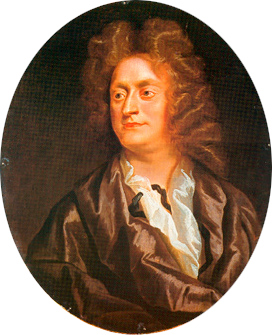
Over the May bank holiday weekend, St Margaret’s Chamber Choir took part in the Anniversaries Festival at St Mary’s Church in Hendon where the music of Purcell (born 350 years ago), Handel (died 250 years ago), Haydn (died 200 years ago), Mendelssohn (born 200 years ago) and Buddy Holly (died 50 years ago) was celebrated. Our contribution was to the Purcell evening where we performed his ode “Come ye sons of art” as well as songs such as “Nymphs and Shepherds” and “Fairest Isle”. The musical items were interspersed with contemporary readings and the concert was rounded off by Purcell’s great hymn tune “Christ is made the sure foundation”.
Henry Purcell was born in Westminster in September 1659 into a musical family. His father and uncle were both gentleman of the Chapel Royal. Purcell’s father died when he was five and he was placed under his uncle’s guardianship who saw to it that Henry was admitted to the Chapel Royal as a chorister. When his voice broke Purcell became assistant to the royal organ tuner. At the age of just 22, Purcell succeeded his teacher John Blow as organist at Westminster Abbey and two years later was appointed organist at the Chapel Royal, holding both posts simultaneously. He died at the height of his career at the age of just 36 and is buried next to the organ at Westminster Abbey. His epitaph reads "Here lies Henry Purcell, who left this life and is gone to that blessed place where only his harmony can be exceeded."
Two days before our Purcell concert we had an excellent performance of Mozart’s Requiem as part of the St Margaret’s Spring Concert and I was pleased that we had a strong contingent of seven singers from St Edmund’s who contributed towards a memorable evening.
Jun 7th
Prelude – Dido’s Lament – H.Purcell
Postlude – Trumpet Tune – H.Purcell
Jun 14th
Prelude – Berceuse – L.Vierne
Postlude – Prince of Denmark’s March – J.Clarke
Jun 21st
Prelude – Legende – L.Vierne
Postlude – Trumpet Tune – J.Stanley
Jun 28th
Prelude – Choral – L.Vierne
Postlude – Prelude to a Te Duem – M-A Charpentier
FROM THE CONSOLE - MAY 2009

For many music lovers, the Netherlands are considered an organ paradise; there is no other country in the world which harbours such a treasure of
historic organs. In every town or village one can find one or more precious examples. Last May I took the opportunity to visit one of the most famous.
We were visiting Aline’s Aunt and Uncle in Amsterdam and one of the highlights was a visit to the city of Haarlem,
some fifteen miles west of the capital. Dominating the central market square is the Grote Kerk (Great Church) dedicated to Saint Bavo, the
city’s seventh century patron saint. There have been several churches on the current site, the present one dating from the sixteenth century.
The present organ was built in 1738 by Christian Muller and is regarded as one of the world’s great organs. The wonderful case was built by the sculptor Jan van Logteren.
Mendelssohn, Handel and Mozart have all performed on the instrument.
In 1658, Peter Stuyvesant founded the American settlement of New Haarlem as an outpost of New Amsterdam.
After the English captured the Dutch colony in 1664, they renamed New Amsterdam to be New York and anglicized Haarlem to be Harlem, the area of Manhattan to the
north of Central Park.
During our holiday we also visited the Amsterdam Arena, home to Ajax, and Alex added a Dutch football shirt to his growing collection!
May 3rd
Prelude – Adagio for Strings – S.Barber
Postlude – Prelude in A Minor – J.S.Bach
May 10th
Prelude – Chanson de Nuit – E.Elgar
Postlude – Prelude in F Minor – J.S.Bach
May 17th
Prelude – Chanson de Matin – E.Elgar
Postlude – Fugue in E Flat (“St Anne”) – J.S.Bach
May 24th
Prelude – Adagio in C Major – J.S.Bach
Postlude – Fugue in C Major – J.S.Bach
May 31st
Prelude – Adagio (Symphony No 5) – C.Widor
Postlude – Nun Danket – S.Karg-Elert
FROM THE CONSOLE - APRIL 2009
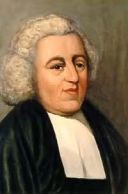
In a recent Church of England survey of 400 couples, John Newton’s hymn “Amazing Grace” was chosen as the most popular wedding hymn. Their ceremony planner
website – www.yourchurchwedding.org – has audio clips of hymns and lists of readings, as well as the ability to create
a draft printout of your service.
Newton was born in Wapping in 1725. He went to sea with his father at the age of eleven and eventually became captain of a slave ship. On
one particular voyage in 1748, his ship was struck by a terrible storm. Thinking that the ship would surely sink, he wrote in his journal
"Lord have mercy on us". Later in his cabin he reflected on what had happened and came to believe that God had saved
them. Over the next six years his faith matured.
In 1755 Newton gave up the slave trade and nine years later was ordained, taking up the curacy at Olney near Milton Keynes.
He became good friends with the poet William Cowper and between them they published “Olney Hymns” which featured 280 of Newton's hymns,
including "Amazing Grace". In 1779 he became Rector at St Mary, Woolnoth in the City of London where he remained until his death in 1807.
Newton and his wife were originally buried at St Mary's but were reinterred at Olney in 1893. The melody of "Amazing Grace" first
appears in an 1831 hymnal called "Virginia Harmony", although it is believed to be Irish or Scottish in origin. Click here to
hear a performance of this hymn.
The other hymns in the top ten were 2 Make Me a Channel of Your Peace, 3 All Things Bright and Beautiful, 4 Give Me Joy in my Heart,
5 We Pledge to One Another (to the tune I Vow to Thee my Country), 6 Praise My Soul, the King of Heaven, 7 Lord of the Dance, 8 One More Step,
9 Morning Has Broken, 10 Be Still for the Presence of the Lord.
This is an edited version of an article which first appeared in the magazine in 2005. All of my articles since 2002 are available
from this page.
Apr 5th
Postlude – Praise the Lord, O My Soul – S.Karg-Elert
Apr 12th
Prelude – Toccata in D Minor – J.S.Bach
Postlude – Fugue in D Minor – J.S.Bach
Apr 19th
Prelude – Duetto – P.Whitlock
Postlude – Toccata – E.Gigout
Apr 26th
Prelude – Allegretto – P.Whitlock
Postlude – Grand March (“Aida”) – G.Verdi
FROM THE CONSOLE - MARCH 2009

My preludes for the first four Sundays of March are taken from Lent section of J.S.Bach’s Orgelbuchlein (“Little Organ Book”). This is a collection of 46
chorale preludes for the liturgical year designed as a teaching manual. Bach had planned to write 164 chorale preludes but never managed to complete
the task. Most of the pieces (indeed, most of his organ music generally) date from his years (1708-1717) as Court Organist
to Duke Wilhelm Ernst of Weimar. The work was not published in its entirety until Mendelssohn edited an edition. Mendelssohn
was an important figure in the revival of Bach’s music and in 1829 arranged and conducted a performance of the “St Matthew Passion”, the
first since Bach’s death in 1750.
My postludes for February and March are the Eight Short Preludes and Fugues. Bach Scholars are fairly convinced that the master did not write these fine
miniatures but are divided about who they think actually did. Some say that they may have been written by one of Bach’s pupils, Johann Ludwig Krebs, while
others argue that they are more characteristic of the South German school of such composers as Pachelbel and Fischer.
The Prelude in B Minor which I am playing on Passion Sunday is a particular favourite of Father Philip and was performed at his inauguration
in October. On that day I am also performing Brahms’ “Herlich Thut Mich Verlangen” which includes the melody of the famous Passion Chorale.
Mar 1st
Prelude – O Lamm Gottes, unschuldig – J.S.Bach
Postlude – Prelude and Fugue No 5 – J.S.Bach
Mar 8th
Prelude – Christe, du Lamm Gottes – J.S.Bach
Postlude – Prelude and Fugue No 6 – J.S.Bach
Mar 15th
Prelude – Da Jesus an dem Kreuze stund – J.S.Bach
Postlude – Prelude and Fugue No 7 – J.S.Bach
Mar 22nd
Prelude – O Mensch, bewein dein Sünde groß – J.S.Bach
Postlude – Prelude and Fugue No 8 – J.S.Bach
Mar 29th
Prelude – Herlich Thut Mich Verlangen – J.Brahms
Postlude – Prelude in B Minor – J.S.Bach
FROM THE CONSOLE - FEBRUARY 2009

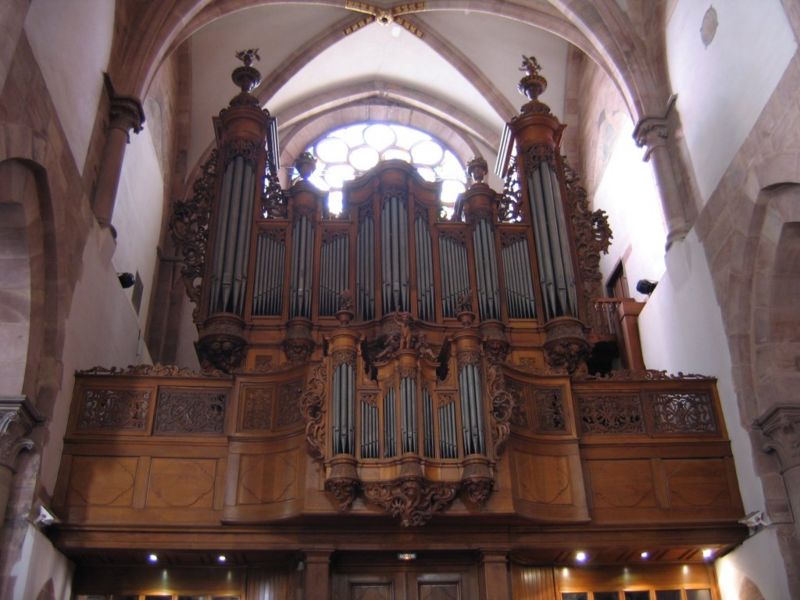
Last summer, while driving down to the South of France, we stopped off for a couple of days in the city of Strasbourg. During one of our walks, we stumbled
across St Thomas’ Church which contains a fascinating organ.
In 1777, accompanied by his mother, Mozart began another of his European job-hunting tours, ending up in Paris, where he composed his “Paris” Symphony
No 31. The following summer his mother died there and Mozart began a long circuitous route back home to Salzburg, a place he was reluctant
to return to. He stopped off in Strasbourg on October 10th 1778 and stayed there for just under a month. During his time there he performed on the
piano and gave several organ recitals, including one on the Silbermann-built instrument in St Thomas’ Church.
This instrument was built in 1741 and was faithfully restored in 1979. The original console is still on show in the church and
it was quite humbling to think that these actual keys were played by the great composer himself.
During our stay in Strasbourg, we also enjoyed a bicycle ride around the grounds of the European Parliament, an evening boat tour around the city’s canals and a
bus trip into nearby Germany.
Feb 1st
Prelude – Sicilienne – Paradis
Postlude – Prelude and Fugue No 1 – J.S.Bach
Feb 8th
Prelude – Ave Maria – F.Schubert
Postlude – Prelude and Fugue No 2 – J.S.Bach
Feb 15th
Prelude – Death of Ase (Peer Gynt) – E.Grieg
Postlude – Prelude and Fugue No 3 – J.S.Bach
Feb 22nd
Prelude – Solveig’s Song (Peer Gynt) – E.Grieg
Postlude – Prelude and Fugue No 4 – J.S.Bach
FROM THE CONSOLE - JANUARY 2009
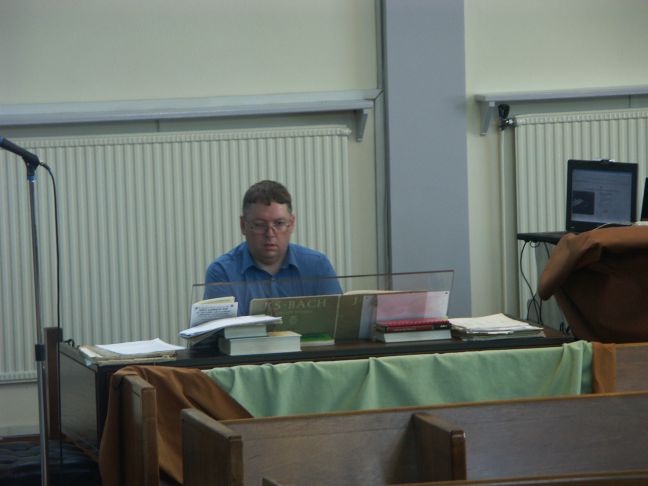
In last month’s magazine, I mentioned that it was possible for me to create a custom compact disc from one hundred tracks recorded during last July’s Organ Marathon. The
cost is £7.50 and you can choose as many tracks as you like up to a maximum of 65 minutes. Please click here for a list of tracks and return it to me. My email address is organist@stedmundschurch.org.uk.
Jan 4th
Prelude – Desseins Eternels – O.Messiaen
Postlude – Carillon - L.Vierne
Jan 11th
Prelude – Prelude on “Dix” – F.Peeters
Postlude – Carillon Sortie - H.Mulet
Jan 18th
Prelude – Prelude on “Stuttgart” – F.Peeters
Postlude – Trumpet Tune – J.Stanley
Jan 25th
Prelude – Prelude to “Lohengrin” – R.Wagner
Postlude – Prelude in C Minor – J.S.Bach
FROM THE CONSOLE - DECEMBER 2008

For me, music has always been central to Christmas. When a child, I was banned from playing carols on the piano (above) until the beginning of November
and All Saints Day is still traditionally the day when the Christmas CDs come out in the Hammond household!
At the age of seven - together with Frank Jacobs, who occasionally sings at St Edmund’s - I joined Christchurch Priory (then in Hampshire but now in Dorset) as a
chorister and was later Assistant Organist. Christmas was a huge occasion with several thousand attended Midnight Mass. The service didn’t end until after 1.30 in the
morning and we then had to come back for two further services on Christmas morning! Rather unusually, the Priory carol service took place on the Sunday
after Christmas and there was often a feeling of anticlimax to the occasion.
From the age of twelve I was also involved with the Highcliffe Junior Choir, winners of the 1996 Sainsbury’s Youth Choir of the Year, as choir member and later as
accompanist. Mary Denniss, the choir’s founder, encouraged my composing and the choir gave first performances of several of my pieces, including “I Sing of a Maiden”,
which was performed at last year’s St Edmund’s Carol Service. You can hear this piece on my Christmas page together
with some of my favourite seasonal pieces. Mary Denniss suggested that I enter the 1979 Woman’s Realm Children’s Christmas Carol Writing Competition which I duly
won, the prize being a Yamaha organ. I appeared on ITV’s “Magpie” programme and my composition – “The Holy Star” – was (rather badly) performed. Sadly my parents didn’t have a video recorder at
the time although the audio of the programme can also be found on my Christmas page. I also remember singing carols on Christmas Eve at local
hotels for many years, including the famous Chewton Glen.
During my three years at Cambridge University, the Carol Service would often take place in November due to the short length of the terms. I also played for the
carol service at The College of St Hild and St Bede, Durham University during my P.G.C.E year there. These days we alternate Christmases between England and France.
Thanks to the internet, I can still fortunately hear the Carol Service live from King’s College, Cambridge on Christmas Eve in darkest Provence!
During the summer I completed a 24 hour Organ Marathon in aid of the Church Hall Roof which is in imminent need of replacing. Over five thousand pounds was raised and
a CD featuring highlights of the event has just been produced and is available in return for a suggested donation of £5 towards church funds. The vast majority
of the twenty four hours were recorded and it is also possible to create a custom CD (suggested donation of £7.50) from Terry and Bernard’s
recordings – please get in touch for details.
May I take this opportunity to wish all of you a merry Christmas and a happy new year. If you have any comments or questions I would be very pleased
to hear from you – email me!.
Dec 7th
Prelude – Advent Aria – A.Fish
Postlude – Nun komm, der Heiden Heiland – J.S.Bach
Dec 14th
Prelude – Advent Reflections – R.Bonighton
Postlude – Gottes Sohn ist kommen – J.S.Bach
Dec 21st (10.00)
Prelude – Christmas Concerto – A.Corelli
Postlude – Vom Himmel Hoch – J.Pachelbel
Dec 21st (6.30)
Prelude – Six Interludes on Christmas Carols – W.Lloyd-Webber
Postlude – In Dulci Jubilo – J.S.Bach; Toccata - Widor
Dec 24th (11.30)
Prelude – God Rest Ye Merry Gentlemen – J.Rutter
Postlude – In Dulci Jubilo – J.S.Bach; Toccata - Widor
Dec 25th
Prelude – Une Vierge Pucelle – N.Lebegue
Postlude – Sleigh Ride – L.Anderson
Dec 28th
Prelude – Coventry Carol – G.Phillips
Postlude – Gelobet seist Du, Jesu Christ – J.S.Bach
FROM THE CONSOLE - NOVEMBER 2008

This year is the fiftieth anniversary of the death of Ralph Vaughan Williams. His father was vicar at Down Ampney in Gloucestershire and his mother was the
Great Grand-Daughter of the potter Josiah Wedgwood and the niece of Charles Darwin. His father died when Ralph was just three years old and he and
his mother moved to the Wedgwood family home at Leith Hill Place near Dorking in Surrey (now owned by the National Trust). After
studying at the Royal College of Music, Vaughan Williams read history at Trinity College, Cambridge.
Despite being described by his second wife as an atheist who drifted into agnosticism, Vaughan Williams was the musical editor of first 1906
edition of “The English Hymnal”. He included several of his own original hymn tunes, including “For all the Saints” and “Come down O love divine”
(named “Down Ampney” in honour of his birthplace). He also made adaptations of folk songs, most notably the Sussex tune “Valiant” or “Welcome Sailor” in “He who would valiant be”. Vaughan Williams would travel the country and make transcriptions of native tunes.
Vaughan Williams died on August 26th 1958 and his funeral took place in Westminster Abbey, where he is buried. The service
concluded with his famous arrangement of “All people that on earth do dwell” which had been first performed at Queen Elizabeth’s coronation five years earlier.
Nov 2nd
Prelude – Prelude on “Rhosymedre” – R.Vaughan Williams
Postlude – Prelude on “Hyfrodol” – R.Vaughan Williams
Nov 9th (10.00)
Prelude – Nimrod – E.Elgar
Postlude – Fame and Glory – A.Matt
Nov 9th (3.30)
Prelude – Pavane – G.Faure
Postlude – Sicilienne – M.Paradis
Nov 16th
Prelude – Lyric Melody – C.Armstrong Gibbs
Postlude – Jubilate Deo – C.Armstrong Gibbs
Nov 20th (7.00)
Prelude – Psalm Prelude, Set 1, No 1 – H.Howells
Postlude – Toccata – C.Widor
Nov 23rd
Prelude – Vocalise – S.Rachmaninov
Postlude – Saint Paul before Aggripa (“Peterhouse Chapel Window Suite”) – B.Ferguson
Nov 30th
Prelude – Wachet Auf – J.S.Bach
Postlude – Crown Imperial – W.Walton
FROM THE CONSOLE - OCTOBER 2008
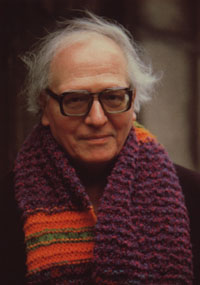
This year marks the centenary of one of the most important composers for the organ, although he is not always appreciated by the congregation at St Edmund’s!
Olivier Messiaen was born in Avignon in 1908. After the First World War, his family moved to Paris where he entered the Conservatoire at the age of 11. He studied the organ with Marcel Dupré and composition with Charles Widor. “Le Banquet Celeste”, one of his earliest published compositions, was written in 1928 and is a recomposition of a section of an unpublished orchestral piece written a decade earlier.
In 1931, largely thanks to a letter of recommendation from Widor, Messiaen was appointed organist at La Trinité, a post he held for over sixty years until his death in 1992.
At the start of World War Two, Messiaen was called up to the French Army as a medical auxiliary. He was captured and sent to Staleg VIII-A where he remained for a year. Whilst there, he met a violinist, cellist and clarinettist, and with himself on the piano wrote “Quatour pour le Fin de Temps” (Quartet for the End of Time) which was first performed at the camp in January 1941.
Following his release he was appointed Professor of Harmony at the Paris Conservatoire where his pupils included Pierre Boulez and Karlheinz Stockhausen. As well as music from Indonesia, India and ancient Greece, Messiaen’s music has been heavily influenced by birdsong. He believed birds to be the greatest musicians and considered himself as much an ornithologist as a composer. He notated birdsongs worldwide and incorporated their transcriptions into a majority of his music.
Oct 5th
Prelude – Thou Art Peter (Peterhouse Chapel Windows Suite) - B.Ferguson
Postlude – Magnificat Primi Toni - J.Pachelbel
Oct 12th
Prelude – Prière à Notre Dame - L.Boellmann
Postlude – Toccata - L.Boellmann
Oct 13th
Prelude – Psalm Prelude, Set 1, No 1 – H.Howells
Postlude – Prelude in B Minor – J.S.Bach
Oct 19th
Prelude – Le Banquet Celeste – Olivier Messiaen
Postlude – Toccata in B Minor - E.Gigout
Oct 25th
Prelude – Musette in G - G.Handel
Postlude – Organ Concerto No 5 (1st Movement) - G.Handel
FROM THE CONSOLE - SEPTEMBER 2008

Da-da-da - it started with a toccata and ended with one. Bach’s famous first three notes launched the 24-Hour Sponsored Organ Marathon in aid of the Church Hall Roofing Fund. The first two hours were devoted to the master’s toccatas, preludes and fugues. This was followed by an Elgar Hour and a Scandinavian Hour. At 4pm there was the Children’s Experience and I was pleased to see around fifteen youngsters take an interest in my talk on how the instrument works. Many of them had a go and I then played requests including Doctor Who, James Bond and The Teddy Bear’s Picnic. The children then had their own picnic outside. The couple of hours before the recital were fairly quiet as people were preparing themselves for the evening event although I managed to include several requests. The main event of the recital was a performance of Widor’s Fifth Symphony which – other than the famous toccata - I had never played before. Disaster almost struck when one of the console switches broke but Terry and Mike were on hand to fix it. Afterwards the audience enjoyed an excellent buffet supper organised and prepared by Aline with Terry at the bar.
At 10pm, the French National Anthem – Alex’s request - heralded two hours of Gallic music. A feature of the hours from midnight until 6am was my use of the piano and there were a variety of pieces ranging from Faure and Debussy to Michel Legrand and The Beatles. On the organ I featured some of the more gentle repertoire fitting to the time of night. Later I featured music from Germany and Austria, music from the liturgical year and music from Italy. I also had an Anniversary Hour featuring music by such composers as Vaughan Williams (d1958) and Messiaen (b1908).
6am saw my second slot devoted to J.S.Bach and 8am featured two hours of English music. Hour 23 was entitled “A Musical Miscellany” and featured works I hadn’t been able to include earlier. In the final hour an audience of around twenty had gathered to hear me give a second performance of Widor’s Fifth Symphony. As the final chord of the Toccata died away, the audience rose an applauded – my first (and probably last) standing ovation.
The high point was definitely that ending and the huge sense of relief that it was over as well as the realisation of what I’d actually done. The low point came not as I’d expected in the depths of 3am and 4am but around 8am. By the time I’d got to the end my hands and feet were not always going where my brain was telling them to! The success of this event was largely due to the many people who helped and without whom I could not have undertaken this marathon. There were always at least four people in church, even overnight, and a welcome cup of coffee was always at hand. Special mention must be made of Everton, who was in the audience for more than twenty hours! Although a final amount has not yet been announced, it has already surpassed my personal target. The vast majority of the twenty four hours were recorded by Terry and Bernard, and I have been gradually working my way through the audio and we hope to have several compilation CDs available presently.
Sep 7th
Prelude – Andantino – Lemare
Postlude – Trumpet Tune – Stanley
Sep 14th
Prelude – Apres un Reve – Faure
Postlude – Prelude to a Te Deum – Charpentier
Sep 21st
Prelude – Bailero – Canteloube
Postlude – Trumpet Tune – Purcell
Sep 28th
Prelude – Canon in D – Pachelbel
Postlude – Songs of Praise - Prizeman




















